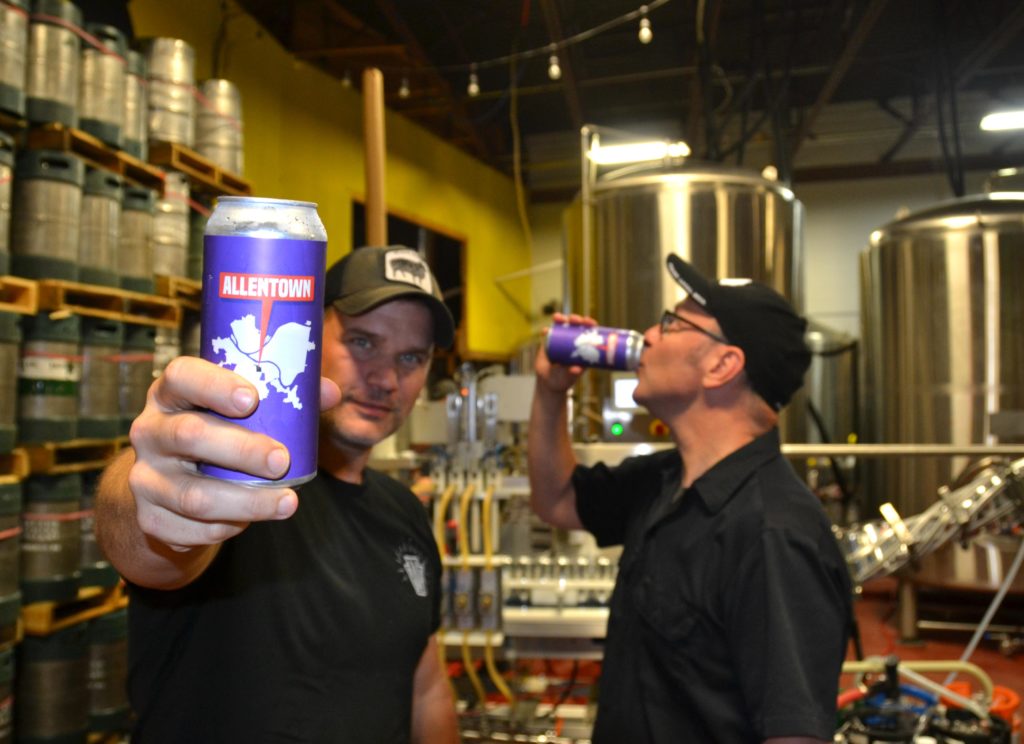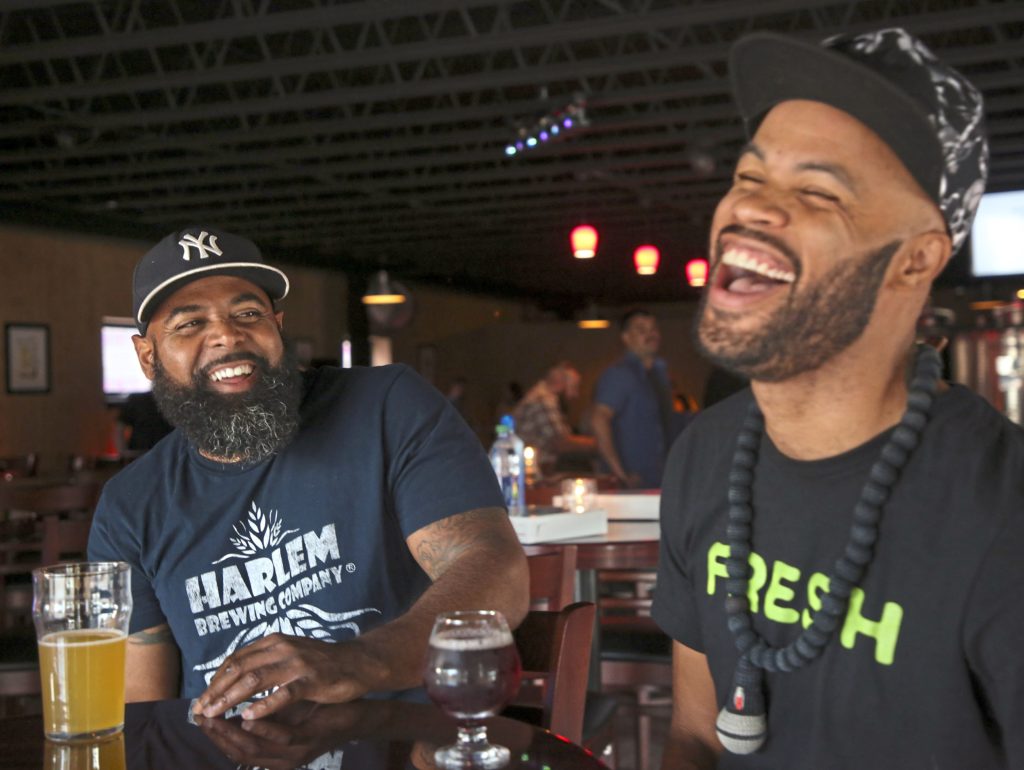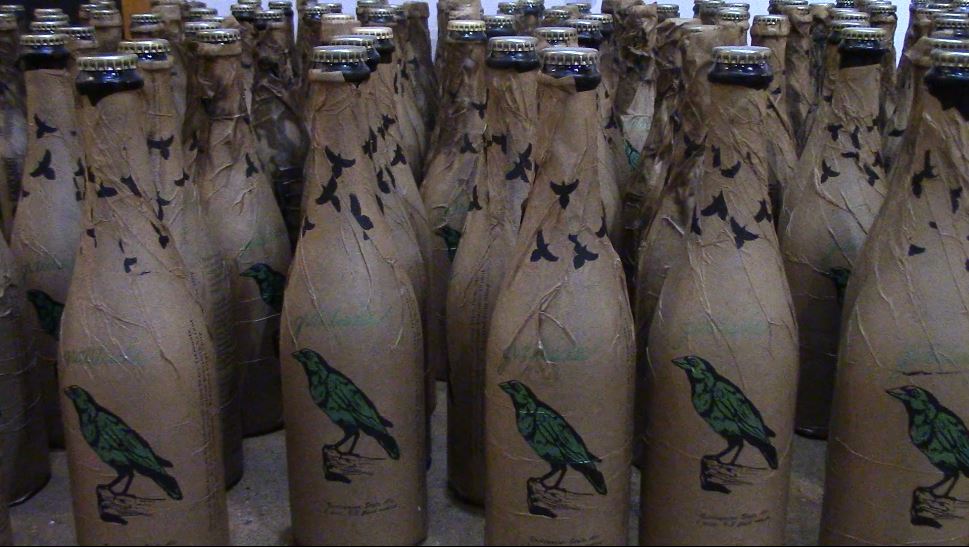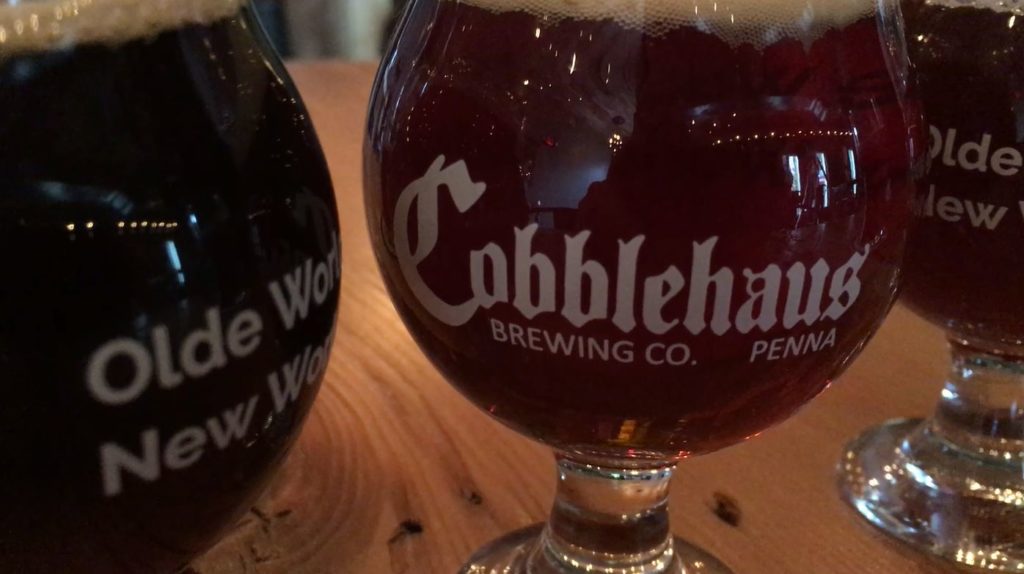
Dan Rugh, of Commonwealth Press, and Scott Smith, of East End Brewing, enjoy cans of Allentown. (East End Brewing)
If you could pick a beer style for your Pittsburgh neighborhood, what would it be? Even though Brighton Heights Berliner Weisse has a nice ring to it, I think I’d prefer a Baltic porter for my ‘hood’s beer.
I might even make that suggestion to Scott Smith, owner of East End Brewing; his brewery is embarking on a neighborhood-by-neighborhood tour of the city’s 92(ish) neighborhoods, making a unique beer for each one — and maybe even finishing the process before he’s ready to retire.
East End’s arrival at a pretty hefty milestone — the brewery’s 15th anniversary — got Smith thinking about EEBC’s place in the city and, further, what he could do to commemorate its 15th year. For a few months, he kicked around the idea of neighborhood beers, trying to match that up with a production schedule that might have a dozen or so beers at various stages going at the same time. A convergence of coincidences — the grand opening of the new Allentown warehouse of brewery design partner Commonwealth Press, for example, gave Smith the nudge he needed to start the project this weekend.
The addition of the new beers into the rotation will mean some changes to how things are done at the brewery, Smith said. If the brewery is able to add, say, 20 neighborhood beers into its production schedule each year, it will mean that seasonals like Pedal Pale won’t be in production — or available — as long as they have been in the past. “We won’t be able to make as much,” Smith said. “They’ll truly be one and done.”
And no matter how much I beg him, I probably won’t get my Brighton Heights Baltic porter. Sometimes the neighborhoods will precede the beer and sometimes it’ll be the other way around, but Smith said he won’t try to tailor specific styles to specific neighborhoods.
Still — 92 beers. That’s a lot of experimentation for the folks at East End — something that keeps the brewing business from becoming too much like a factory — and it’ll be a lot of fun for us.





